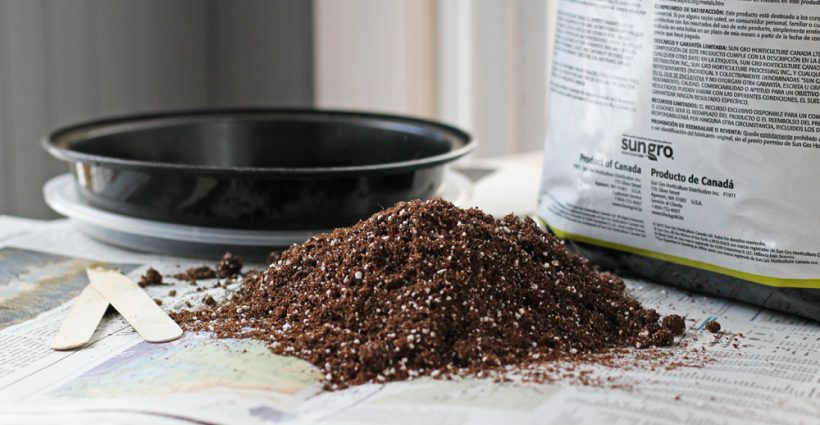designed for the way women work.

Why Do I Use An Infertile, Soilless Mix or Medium for Seed Starting?
Category: Presenting "The Curious Gardener"
When I took a propagation course at The New York Botanical Garden in the Bronx, NY, I learned that the best medium for indoor seed starting is one with little or no actual soil in it. At the time it seemed counter-intuitive to place my seeds in something as lifeless as a ‘soilless’ mix.
Even though ordinary garden soil contains both organic and inorganic matter, I learned that organic matter can bring with it pathogens that provide an inhospitable environment for seeds germinating indoors in an otherwise controlled setting. Organic matter from the garden is teeming with life from things like decaying leaves and other plant material. It’s denser and heavier.
Commercial seed starting mixes combine inorganic matter such as vermiculite and perlite, which are basically rocks, broken down almost to a fine grain, and peat moss which has become infertile over the hundreds of years it takes to grow a peat bog. Those ingredients combined help provide a light, well draining medium for germinating seeds indoors.
Now when I pick up a bag of seed starting mix I read the list of ingredients. If it’s soilless it’s infertile, and that’s a good thing. Although some seed starting mixes have fertilizers in them, fertilizers are not necessary for seed germinating. Wait until after the seed germinates and mix up a light formula of soluble fertilizer with water to add important nutrients to your young plants.
See if you can find coir in the ingredients as a substitute for peat moss. I’ve long known that peat moss is an unsustainable product, and I no longer buy those big compressed bags of it to use as a soil amendment when planting trees and shrubs.
But it’s hard to find a seed starting mix that doesn’t list peat moss as its first ingredient. Margaret Roach wrote a piece in the NY Times recently titled “Alternatives for Peat-Free Growing”. She says the UK has been working on the problem of finding a satisfactory commercial substitute for peat moss for 20 years, and they now have voluntary mandates with deadlines in place for doing just that. Here in North America Canada holds 27% of the world’s peatlands and is the source of most of the horticulture peat sold here yet we have no such mandates in the US. Scientists are working on it.
Peatlands are very good for the environment because, says Margaret Roach, “they filter water and act as giant sponges to prevent flooding.” On the flip side harvesting peat is very bad for the environment because peat extraction has a huge carbon footprint, contributing to greenhouse gases.
Awareness of this issue is a first step to solving it, right?
For lessons I learned at The New York Botanical Garden on successful seed starting, click here.



Thanks for the tip about avoiding peat moss. In addition to the problems you mentioned, peat alkalinizes the soil. While that might work for clematis, it’s not great for other plants, especially acid soil-loving ones.